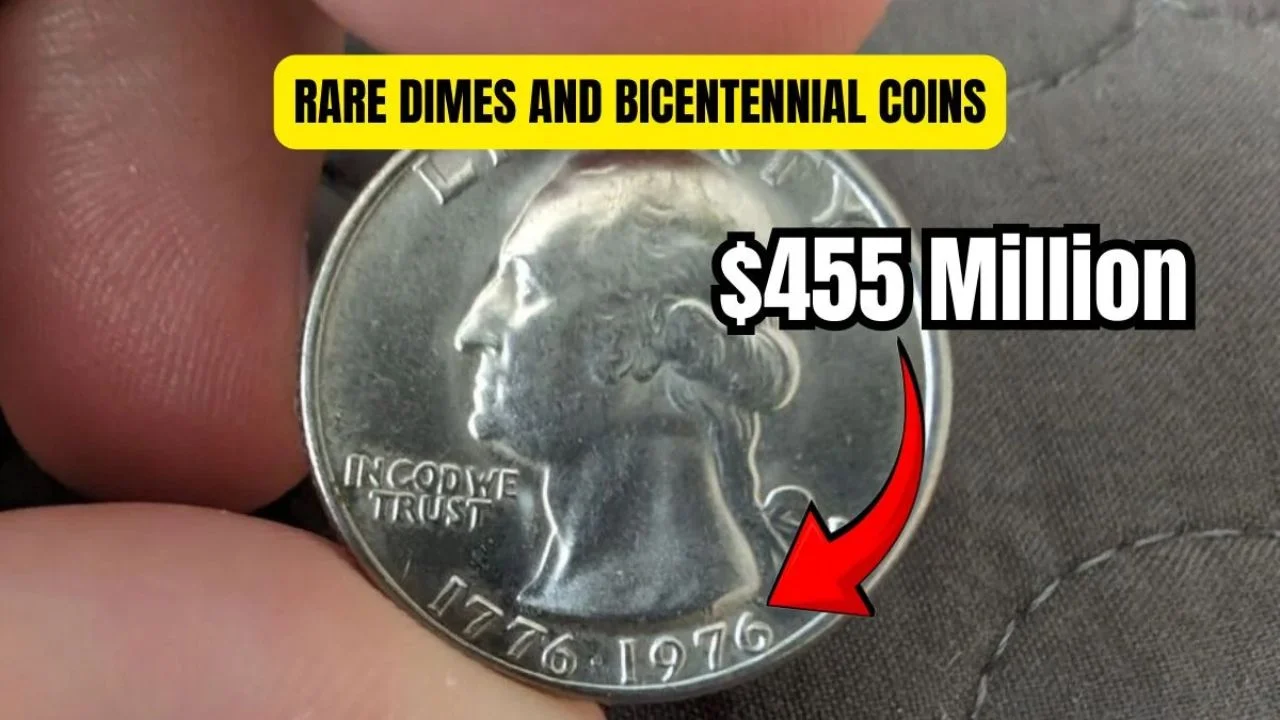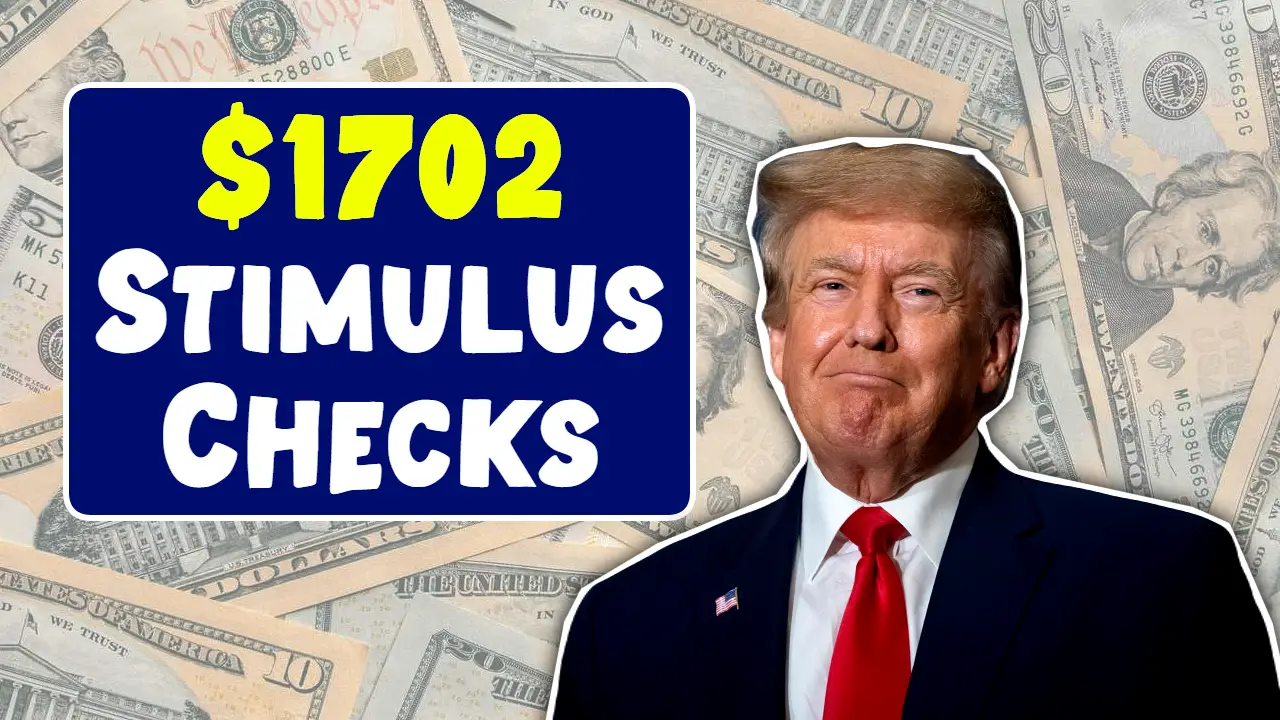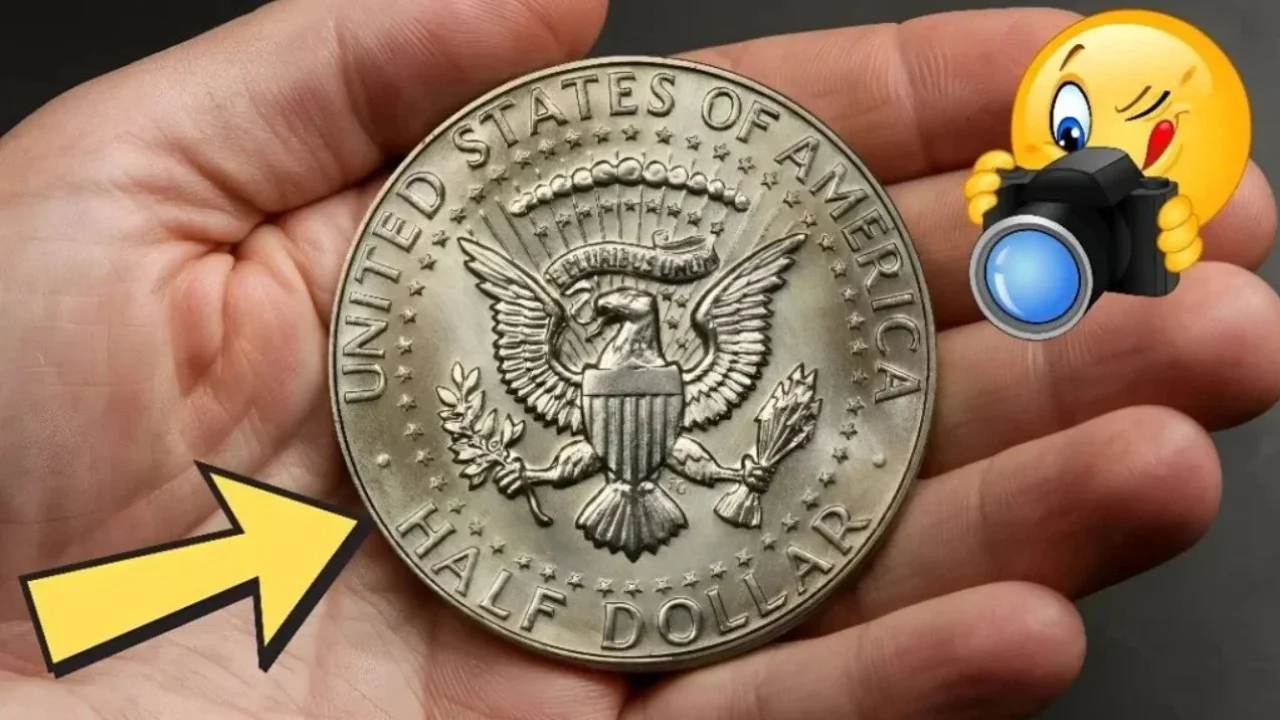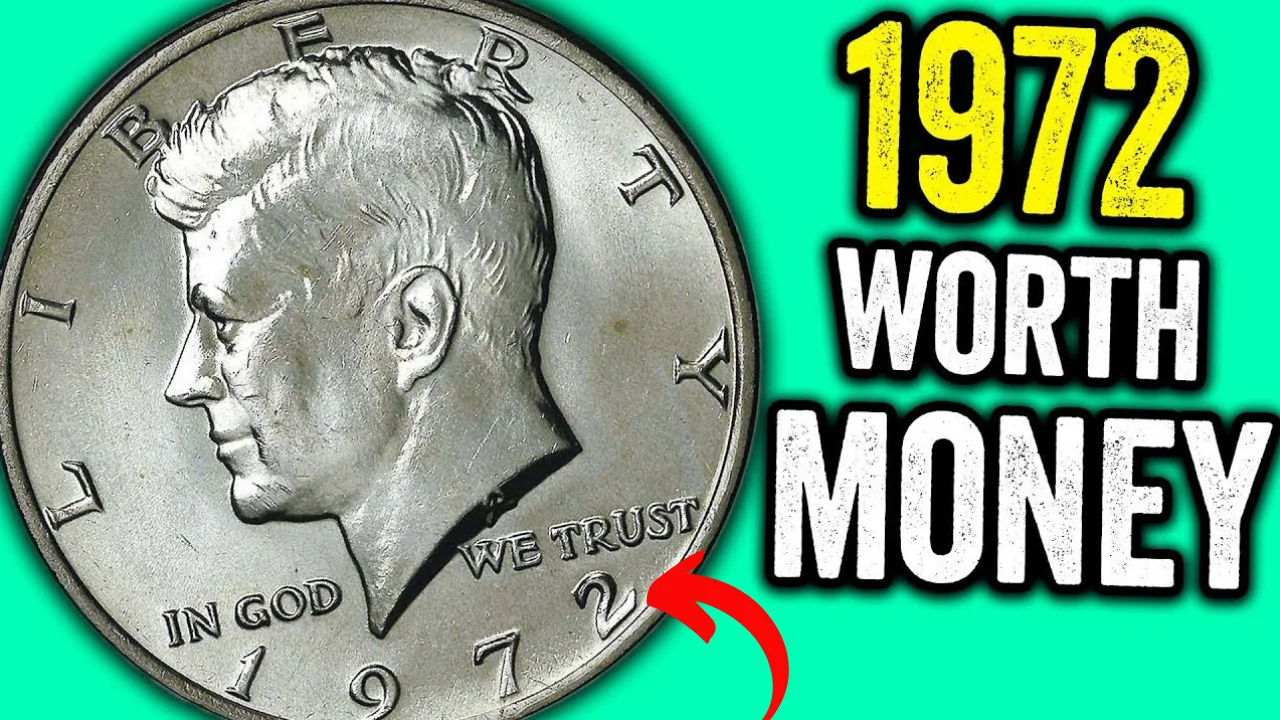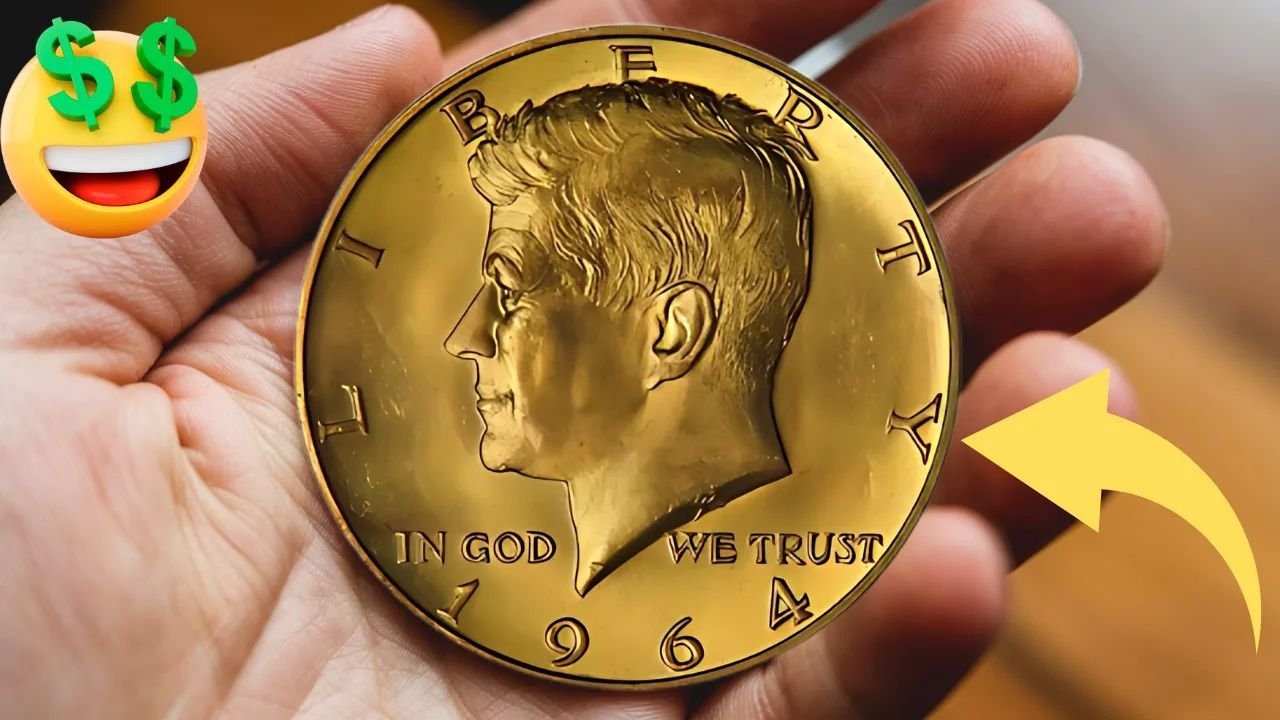$455M in Pocket Change? Hunt for These 5 Vintage Dimes and Bicentennial Quarters Worth Millions
Believe it or not, you could be holding a fortune in your hand without even realizing it. Some old coins that look like ordinary pocket change are actually worth millions of dollars today. In fact, experts estimate that nearly $455 million in valuable coins may still be lying forgotten in jars, drawers, or wallets across the country.
Among the most prized are five rare vintage dimes and Bicentennial quarters. These coins may look normal at first glance, but certain versions of them have rare features, minting errors, or precious metals that make them extremely valuable to collectors.
If you’ve ever kept loose change aside, now’s the time to take a closer look. You might just discover a hidden treasure.
Why Some Old Coins Are Worth Millions
Before we dive into the list, let’s understand why certain coins can be worth so much more than their face value.
Here are the main reasons:
-
Minting Errors – Mistakes made during coin production can make a coin rare and highly sought-after.
-
Precious Metals – Older coins were often made with silver or other valuable materials.
-
Low Mintage – Coins that were produced in small numbers are rare by default.
-
Perfect Condition – Coins with little to no wear fetch a much higher price.
-
Historical Value – Coins tied to important events or changes in the minting process attract serious collectors.
Top 5 Coins to Look Out For
Here are five coins that could turn your loose change into a life-changing payday.
1. 1916-D Mercury Dime
This dime is one of the rarest in U.S. history. Only 264,000 were minted in Denver, making it extremely hard to find. If you happen to own one in mint condition, it could be worth up to $200,000 or more.
How to Identify:
-
Look for the “D” mint mark on the reverse side.
-
Make sure the year is 1916.
-
The dime features Liberty wearing a winged cap (often confused with Mercury).
2. 1942/1 Mercury Dime Overdate
This coin has a famous error: the number “1” is printed underneath the “2” in the year. It was a minting mistake, but that’s exactly what makes it valuable.
Estimated Value: As high as $75,000 in perfect condition.
How to Spot It:
-
Look closely at the date with a magnifying glass.
-
The overdate is most visible on the “1” under the “2”.
3. 1975 No-S Roosevelt Dime (Proof)
Most Roosevelt dimes from 1975 have an “S” mark if they were minted in San Francisco. But two proof coins were mistakenly made without the mint mark, making them extremely rare.
Value: One of these has sold for over $350,000.
Tips for Identification:
-
The coin should look brand new (proof quality).
-
Check that it has no mint mark next to the year.
4. 1976 Bicentennial Quarter (Error Coin – Silver Composition)
Millions of Bicentennial Quarters were made for America’s 200th birthday. Most are common, but a few were struck using 40% silver, and some even have double die errors.
Value: Up to $250,000 depending on rarity and condition.
How to Recognize It:
-
The back has a drummer boy design.
-
The coin may weigh more due to the silver.
-
Look for any doubling in the text or images.
5. 1965 Roosevelt Dime (Silver Planchet Error)
In 1965, the U.S. Mint changed from using silver to copper-nickel for dimes. However, a few dimes were accidentally struck on the old silver planchets.
Current Value: As much as $100,000.
How to Check:
-
A silver dime will weigh more than the regular version.
-
The edge should be solid silver without any copper stripe.
Overview Table
| Coin Name | Year | Unique Feature | Estimated Value | What to Look For |
|---|---|---|---|---|
| Mercury Dime (Denver Mint) | 1916 | Low mintage with “D” mint mark | Up to $200,000 | “D” mint mark, Liberty with winged cap |
| Mercury Dime Overdate | 1942/1 | 1 under the 2 in the year | Up to $75,000 | Overlapping numbers in the date |
| No-S Roosevelt Dime (Proof) | 1975 | Missing mint mark (San Francisco) | $350,000+ | No “S” next to date, proof shine |
| Bicentennial Quarter Error | 1976 | Silver content or double die | Up to $250,000 | Drummer boy design, weight, text doubling |
| Silver Planchet Dime | 1965 | Wrong metal used | Around $100,000 | Solid silver edge, heavier weight |
Where You Might Find These Coins
You don’t have to visit a museum or buy expensive collector sets. These coins may be:
-
In old piggy banks
-
Inside coin jars passed down from relatives
-
Included in pocket change from stores
-
At garage sales or flea markets
Always check your change carefully, especially coins from the 1960s and 1970s. Most people don’t know the difference, so valuable coins often go unnoticed.
FAQs
Q1: How do I know if my coin is silver?
A1: Silver coins feel heavier and don’t have the copper stripe on the edge. You can also check the weight with a scale or get it tested by a coin expert.
Q2: What is a mint mark, and why does it matter?
A2: A mint mark shows where the coin was made. Some mints produced fewer coins, making them rarer. For example, the Denver Mint uses a “D” mark.
Q3: Where can I get my coin appraised?
A3: Visit a local certified coin dealer or send it to a coin grading service like PCGS or NGC. Avoid online scams or unofficial sources.
Q4: Should I clean old coins before selling?
A4: No. Cleaning can damage a coin and reduce its value. Always keep it in its original condition for proper evaluation.
Q5: Can I still use these rare coins to buy something?
A5: Technically, yes. But spending them at face value would be a huge loss. It’s better to sell them to collectors or at auction.
Final Thoughts
The idea that $455 million in rare dimes and quarters could still be floating around in everyday change is both exciting and surprising. While the chances of finding one of these treasures are low, they’re not impossible — and that’s what makes it fun.
Whether you’re a serious collector or just someone with a coin jar at home, now is the perfect time to start checking. Who knows? That old dime or quarter in your drawer might just be worth a fortune.
So before you spend your spare change, take a moment to look closely. Your next coin could change your life.
